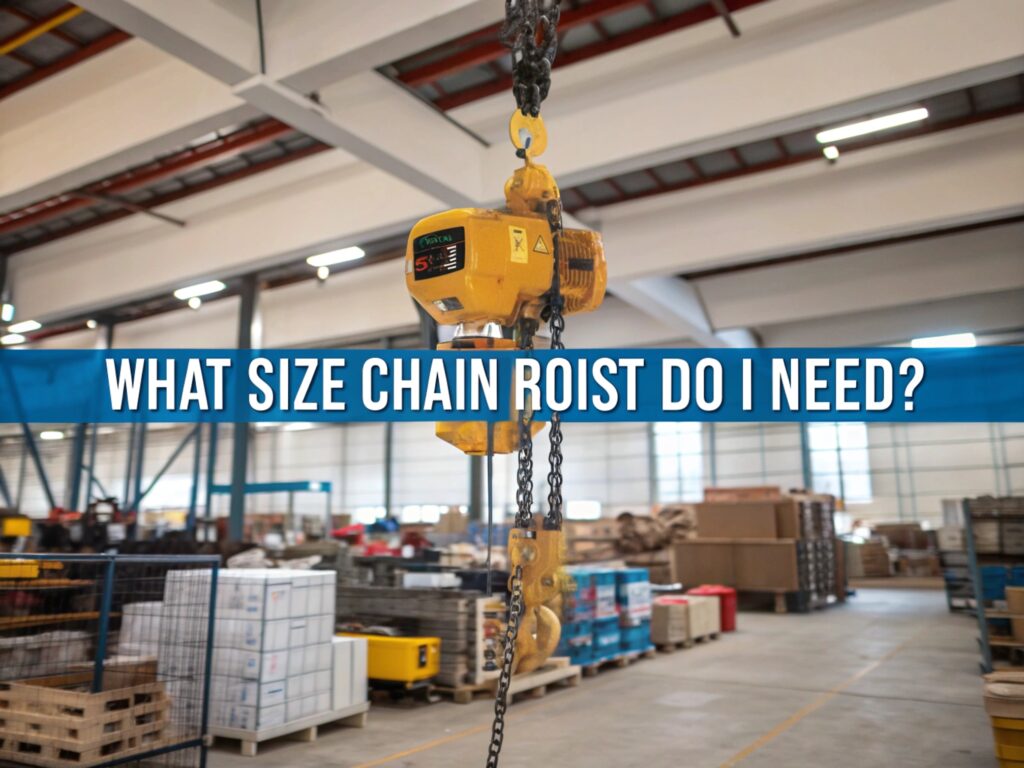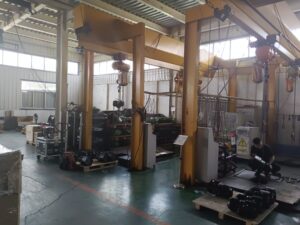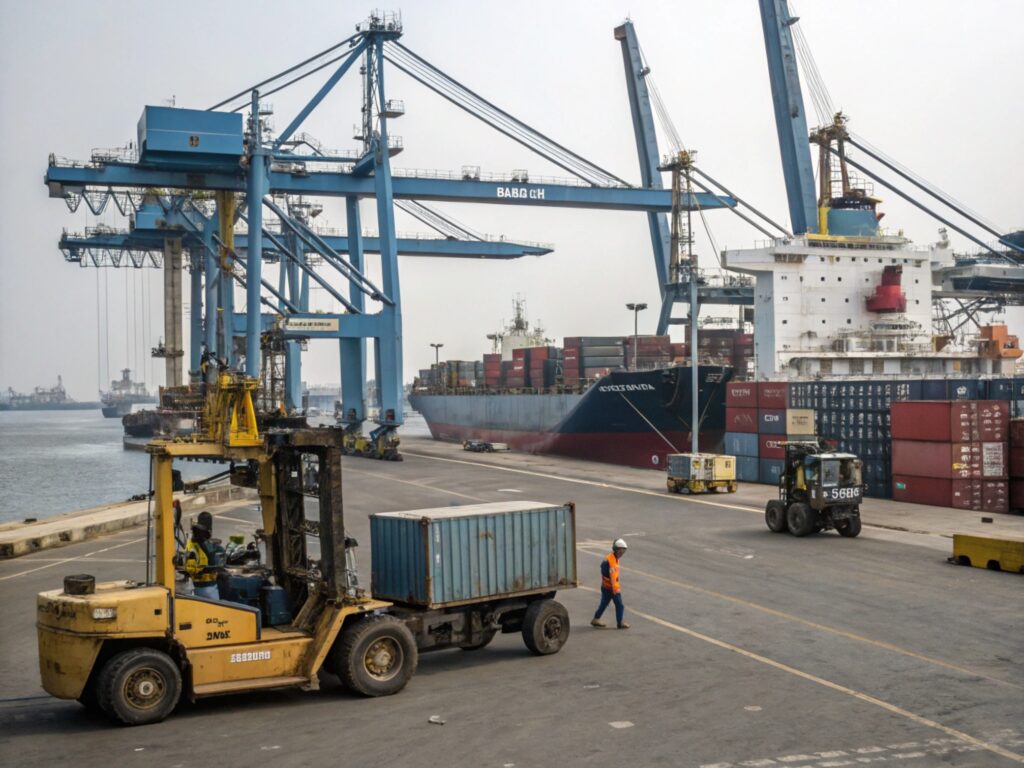Selecting the right load capacity for your electric chain hoist is crucial to ensure safety and efficiency. Overloading can lead to equipment damage, safety risks, and costly repairs.
To choose the right load capacity, make sure the hoist can handle at least 25% more than the heaviest load you’ll lift. This extra capacity ensures the hoist stays within its safe operating range.
I’ve seen many people overlook this key detail, but getting it right is easy. Let’s dive into how you can calculate your needs and make the best choice for your operation.
- What Size Chain Hoist Do I Need?
- What Is the Load Capacity of a Chain Hoist?
- What Are the Common Rated Capacities for Electric Chain Hoists?
- What Hoist Is Typically Designed for Use in Lifting?
- Conclusion
What Size Chain Hoist Do I Need?
Choosing the right size for your hoist ensures safety and smooth operation. But how do you know what size works best for you?
The right size hoist depends on your heaviest load. Always choose a hoist that can handle at least 25% more than the heaviest item you lift regularly.

When selecting the right hoist, you should account for the maximum weight you’ll lift regularly, but also for possible variations in load. For example, in a warehouse, you might often lift loads of 3 tons, but occasionally handle 4 tons. In this case, opting for a 5-ton hoist is the safer choice. It’s important to remember that overloading can cause the hoist to wear down quicker, leading to safety hazards and higher costs in the long run. Furthermore, using a hoist with too little capacity will make the motor work harder, potentially causing overheating and damaging the equipment.
| Load Capacity | Suitable for | Example Use Case |
|---|---|---|
| 1-2 tons | Light loads | Small warehouse lifting |
| 5 tons | Medium loads | Construction site material handling |
| 10+ tons | Heavy loads | Manufacturing plant for heavy parts |
What Is the Load Capacity of a Chain Hoist?
Load capacity is a key feature when selecting a hoist. Let’s break down exactly what this means and how to assess it.
Load capacity refers to the maximum weight a hoist can safely lift. Typical capacities range from 250 kg to over 50 tons, depending on your needs.

The load capacity of a hoist determines how much weight it can safely lift without risking failure. For lighter tasks, such as lifting small machinery parts, a hoist with a 250kg or 500kg capacity might be sufficient. However, in industrial settings where heavy equipment is involved, hoists with capacities ranging from 5 tons to 10 tons are commonly used. Selecting the right load capacity will depend on several factors, including the weight of the objects you typically lift, the frequency of use, and the environment in which the hoist operates.
Another factor to consider is future needs. A hoist rated for just your current heaviest load might work now, but if you anticipate lifting heavier loads down the road, it’s a smart idea to opt for a model with a higher capacity.
What Are the Common Rated Capacities for Electric Chain Hoists?
Electric chain hoists come in various sizes. But how do you know which rated capacity is right for your application?
Electric chain hoists typically come in rated capacities from 0.125 tons to over 50 tons, depending on the job at hand.

Electric hoists are commonly found in a range of capacities, from light-duty models to heavy-duty units capable of handling more than 50 tons. In most warehouses and logistics operations, hoists in the 2.5 to 5-ton range are popular choices. However, if you’re working in construction or heavy manufacturing, you may need hoists that can lift up to 10 tons or more. It’s also important to keep in mind that hoist capacities are not only about weight but also about lifting height and speed. A higher-rated hoist will be able to lift larger loads at greater heights with more efficiency.
What Hoist Is Typically Designed for Use in Lifting?
Hoists come in many varieties, but which one is the best for your specific needs?
Electric hoists are generally designed for lifting heavy loads. Manual hoists, on the other hand, are more suited for lighter tasks or occasional use.
The choice between a manual hoist and an electric hoist depends heavily on your needs. Manual hoists, often used in smaller operations, are cost-effective and suitable for lighter tasks. However, if you’re frequently lifting heavy materials or need higher lifting speeds, an electric hoist is the better option. These hoists are designed to handle higher loads with minimal human effort and can work continuously in a high-demand environment. When choosing the right hoist, consider factors like load weight, duty cycle, and lift speed.
Conclusion
Choosing the right electric chain hoist requires understanding your load needs and the environment where the hoist will be used. By ensuring the hoist can handle at least 25% more than your heaviest load, you’ll improve safety and efficiency in your operations.


